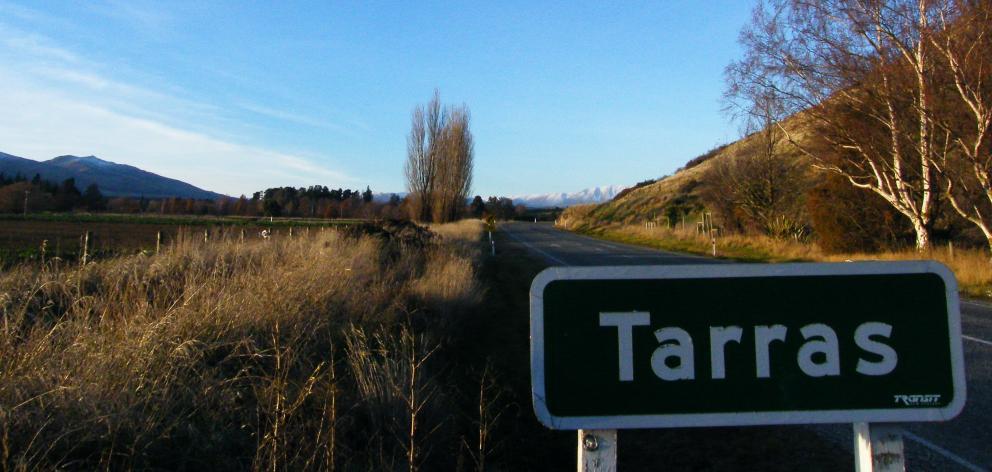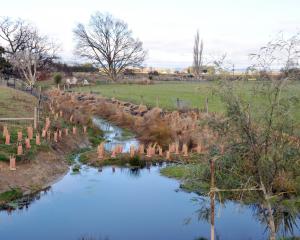
Perplexed but determined, the woman from nearby Maori Point Rd told RNZ her home was a very special, beautiful place. "That’s why tourists come here," she said. "Why are we shooting the goose that lays the golden egg?"
"Shooting" might not be how Christchurch International Airport Ltd sees its potential approach to Central Otago tourism. If the region is a goose, then providing an international airport might well convert the goose to foie gras.
"Fattening" regional tourism might seem a tall order in the midst of a pandemic but it is surely the right time to discuss how another international airport might contribute to the regional and national economy in a post-coronavirus world.
But while doing so, we must be careful to not ignore the work that has already been started to map tourism’s future and to align it with the expectations of the communities it affects.
The Tarras airport proposal — or idea, as the airport company carefully calls it — was quietly developed as the Government outlined its hopes for a sustainable and socially affordable tourism industry.
Just 18 months ago, Tourism Minister Kelvin Davis said rapid visitor growth and the pressure that came with it meant the Government was committed to a "value over volume" approach to tourism.
The positives and many of the negatives of near consistent growth were concentrated in a clutch of high-performing, high-pressure hot spots. Infrastructure was creaking; the load needed to be spread.
This perspective underpinned government policy and by the start of the year formed part of the Parliamentary Commissioner for the Environment’s report into tourism’s effect on the environment, in which Simon Upton noted "value versus volume" is often touted as a solution to increasing pressure — but that value and volume dominated.
New Zealand was "having one’s cake and eating it too" in a high-number approach that would be difficult to sustain without significant pressure on the natural attractions that draw people here in the first place.
There was a danger, tourism academics said, that New Zealand’s tourist hot spots and key attractions might be "loved to death" if the high volume model was not made sustainable.
It is in this context that the airport company quietly spent $45million on 750 hectares of Tarras farmland, to eventually provide a pipeline for visitors to get to one of the most tourist-beloved parts of the country.
It has not gone into detail as to why it hatched its "idea" but it is clear Queenstown’s airport is under pressure and has limits to growth, and that on-again, off-again plans to expand Wanaka airport are contentious, at best.
Neither has it detailed its idea, but a graphic presented by organisers at a meeting on Wednesday expressed 10 aircraft and 3000 passengers a day, and a million passengers a year. It was not the airport's graphic, but it suggested at least some there believed the airport may become a high-volume proposition.
This will worry those who understand an airport is not just a place for flights to land. It is also a place for people to shop, to catch buses and shuttles, and to pick up rental cars and vans. It is a sprawling, busy place, serviced by busy roads.
The airport will could have a significant, permanent impact on a quiet slice of paradise, all while the lower south has three other international airports and at least one other half-an-hour away with the capacity to grow.
This column last week said the idea shows up New Zealand’s potentially costly lack of cohesive infrastructure planning. Now, we must also consider how this lack of cohesion might also affect, or be affected by, the nation’s long-term plan for tourism.
It is just an "idea", and it is far from shovel-ready. But soon, Mr Davis ought to let the community know whether another international airport, on the greenest of fields, is really what New Zealand, Central Otago and Tarras needs.
Comments
Basing our economy on Tourism was a foolish strategy. The Covid has show us that. The people living in central Otago do not want tourism, nor another corporate airport. Try good industrial jobs. Fabrication. Manufacturing. Export Farming products. Not Tourism either, it destroys the soul. And get out of China too. Sucking up to communist China for table scraps only benefits the 1% and puts the rest of us in debt slavery.












